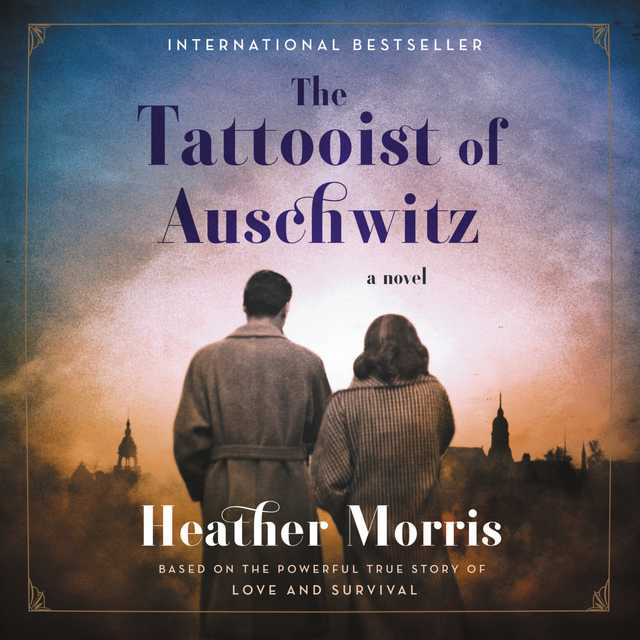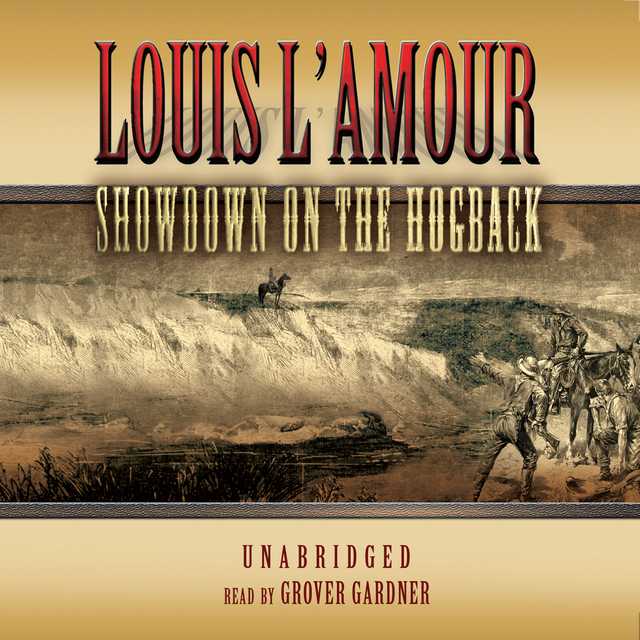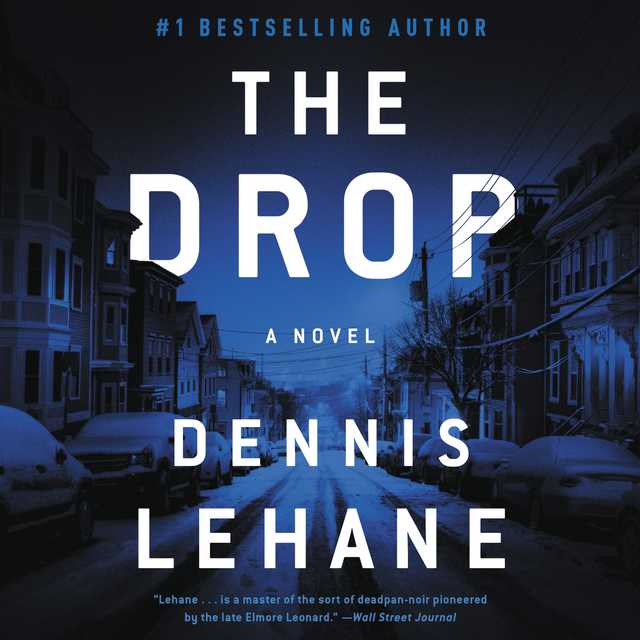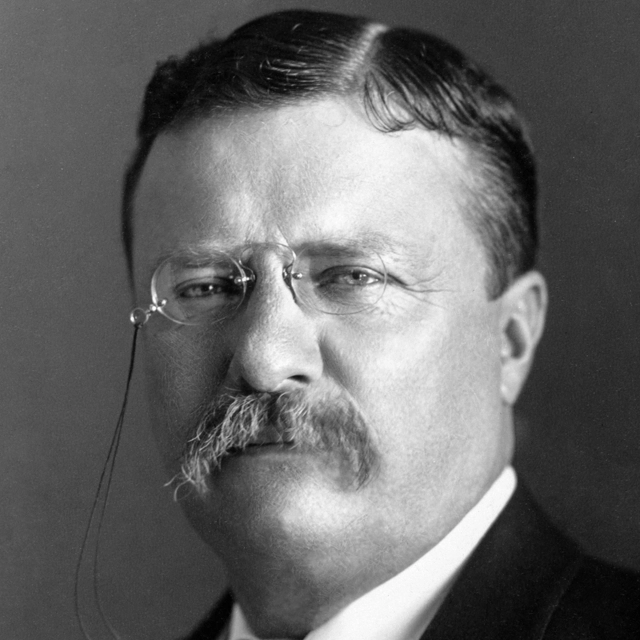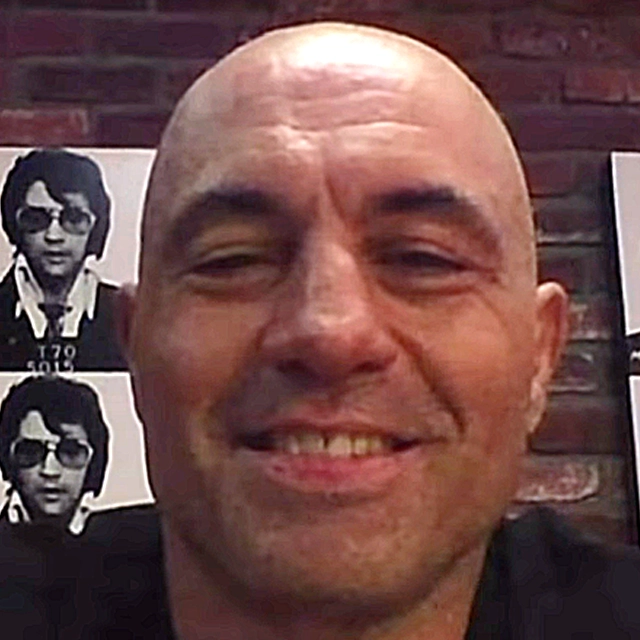The Tattooist of Auschwitz Audiobook Summary
This beautiful, illuminating tale of hope and courage is based on interviews that were conducted with Holocaust survivor and Auschwitz-Birkenau tattooist Ludwig (Lale) Sokolov–an unforgettable love story in the midst of atrocity.
“The Tattooist of Auschwitz is an extraordinary document, a story about the extremes of human behavior existing side by side: calculated brutality alongside impulsive and selfless acts of love. I find it hard to imagine anyone who would not be drawn in, confronted and moved. I would recommend it unreservedly to anyone, whether they’d read a hundred Holocaust stories or none.”–Graeme Simsion, internationally-bestselling author of The Rosie Project
In April 1942, Lale Sokolov, a Slovakian Jew, is forcibly transported to the concentration camps at Auschwitz-Birkenau. When his captors discover that he speaks several languages, he is put to work as a Tatowierer (the German word for tattooist), tasked with permanently marking his fellow prisoners.
Imprisoned for over two and a half years, Lale witnesses horrific atrocities and barbarism–but also incredible acts of bravery and compassion. Risking his own life, he uses his privileged position to exchange jewels and money from murdered Jews for food to keep his fellow prisoners alive.
One day in July 1942, Lale, prisoner 32407, comforts a trembling young woman waiting in line to have the number 34902 tattooed onto her arm. Her name is Gita, and in that first encounter, Lale vows to somehow survive the camp and marry her.
A vivid, harrowing, and ultimately hopeful re-creation of Lale Sokolov’s experiences as the man who tattooed the arms of thousands of prisoners with what would become one of the most potent symbols of the Holocaust, The Tattooist of Auschwitz is also a testament to the endurance of love and humanity under the darkest possible conditions.
Other Top Audiobooks
The Tattooist of Auschwitz Audiobook Narrator
Richard Armitage is the narrator of The Tattooist of Auschwitz audiobook that was written by Heather Morris
Heather Morris is a native of New Zealand, now resident in Australia. For several years, while working in a large public hospital in Melbourne, she studied and wrote screenplays, one of which was optioned by an Academy Award-winning screenwriter in the US. In 2003, Heather was introduced to an elderly gentleman who ‘might just have a story worth telling’. The day she met Lale Sokolov changed both their lives. Their friendship grew and Lale embarked on a journey of self-scrutiny, entrusting the innermost details of his life during the Holocaust to her. Heather originally wrote Lale’s story as a screenplay – which ranked high in international competitions – before reshaping it into her debut novel, The Tattooist of Auschwitz.
About the Author(s) of The Tattooist of Auschwitz
Heather Morris is the author of The Tattooist of Auschwitz
More From the Same
- Author : Heather Morris
- Listening Well
- Cilka’s Journey
- Three Sisters
- Publisher : HarperAudio
- Abraham
- American Gods [TV Tie-In]
- Dead Ringer
- House of Sand and Fog
- Prey
The Tattooist of Auschwitz Full Details
| Narrator | Richard Armitage |
| Length | 7 hours 25 minutes |
| Author | Heather Morris |
| Category | |
| Publisher | HarperAudio |
| Release date | September 04, 2018 |
| ISBN | 9780062866998 |
Additional info
The publisher of the The Tattooist of Auschwitz is HarperAudio. The imprint is HarperAudio. It is supplied by HarperAudio. The ISBN-13 is 9780062866998.
Global Availability
This book is only available in the United States.
Goodreads Reviews
Debra
September 02, 2018
I'll never hear Yiddish again....I'll never go to the German Consulate with her again...I’m gutted reading this book. To some I have shared that my family's "MA" was in Auschwitz (everyone called her MA - her daughters, her grandchildren, her great grandchildren, her friends, etc.). She used to say "I have lost everything that can ever be lost “and "I have given everything can that ever be given". She passed away in 2017 at the age of 95. We just had her headstone unveiling. This was probably not the best book for me to read at this time - but then again maybe it was...In the last years of her life, I would go with her to the German Consulate to prove she was still alive, so she could continue receiving her reparation checks. She would get dressed in her best outfit and walk in proudly to announce she was still alive. There used to be a long line of survivors waiting to go in, the last time I went with her, we were the only ones in the waiting room. I used to dread going there with her. It was a production. Days before she would get her hair washed and set, the day of she would get up early and do her makeup and fuss over her outfit. I would always say "why do you dress up to go there?" She would always say "I am proud of who I am." and tell me not to embarrass her by wearing my "schmata" and would it kill me to put on a little red lipstick. Then she would announce to everyone in the room that I was her granddaughter. Now I will never go again. Last year we had our first Thanksgiving, Hanukkah and Christmas without her (I have a half Jewish - half Christian family). There are not many survivors left in the world which is why I am glad that books like this exist."To Save one is to save the world."This book is based on a true story. I always love books based on true stories. In many ways, I think they are the best kind. I also love the pictures of Lale and Gita Sokolov. Lale told his story over the course of three years to the Author. Lale became the Tatowierer "Tattooist" of Auschwitz and Birkenau. Being the tattooist gives him special perks - more rations, better sleeping conditions, ability to move around the camp more freely. He also was able to exchange the money and prized possessions of those who died in the gas chambers for food and medicine. He was generous and provided for many. He saved lives and I wonder how many survived due to him acquiring medicine and extra food for them. While giving a tattoo, he meets Gita and feels an instant attraction to her. This book is not only a book about survival during the bleakest of times, it is about triumph of the human spirit, about being pushed to the breaking point but never breaking, about love, about compassion for others, about hope, about losing your faith and about never losing your faith. It also shows brutality, hatred, and evil but what I hope people take away is the compassion, strength, dignity and resilience that Lale and so many others named in this book showed. This book is about a lot of things but mainly one man's inner strength which allowed him to go on, to never give up, to have compassion for others, who risked his life many times to help others. During the darkest times, there will always be those who shine and Lale Sokolov was one of those.Like many survivors, Lale and Gita moved around until they found their place in Australia, began a family and lead a happy and successful life. Lale proved to have "nine lives" and I was happy to see that he was able to prosper and be reconnected with Gita after the war. I thought this book was well written and I was sucked me into Lale's world. Although there are scenes of violence and murder/killings, they are not incredibly graphic. With any book dealing with the Holocaust, you know it is going to be sad and scenes are going pull at your heartstrings. This one will as well. I think most will really enjoy this book and hopefully learn a few things. For instance, I always thought the tattoos were put on using crude tattoo machines/guns similar to the one used when I got a tattoo. I was wrong. My family member never talked about it. I wonder did Lale give Ma her tattoo? Who knows.?I think reading the Author's note at the end of the book is beneficial. Again, there are pictures of Lale and Gita there. It was nice to put faces with the names. When reading books such as this, I think most readers will wonder, could they have survived. I believe most of us will never know what we are capable of until we are placed to the test. God willing, none of us are ever placed to this test.4.5 starsI received a copy of this book from Bonner Publishing Australia and NetGalley in exchange for an honest review.See more of my reviews at www.openbookpost.com
Miriam
January 13, 2018
Considering "The Tattooist of Auschwitz" is a harrowing true story, it was truly compelling and utterly unputdownable. It's without a doubt one of only a few books that will stay with me a very long time, it's that unforgettable and one that keeps you thinking about the story well after you've put it down. Lale Sokolov is a well dressed, charming ladies' man - however he is also a Jew. On arrival at Auschwitz in 1942 he immediately stands out to his fellow prisoners who save his life when he takes ill. In the camp he is put to work in the privileged position of the 'Tatowierer' - the tattooist - to mark his fellow prisoners as they arrive in camp. One of them is a girl called Gita who captures his heart immediately. Given a reason to survive Lale uses his position for the greater good even through struggles and extreme suffering, with the hope of one day being with Gita forever, outside of the camp. Although upsetting, saddening and at times quite unimaginable, there is such a beautiful love story at the heart of the tale that you can't help smiling at. I immediately took to all the real life characters, they were excellently portrayed whether good or bad and could imagine the whole true scenario with such clarity.The author Heather Morris took several years to write Lale's story in her book with the input of the main protagonist himself and even becoming a very good friend with him. She has ultimately written a story Lale would be very proud of and which tells of his and Gita's tale of wanting to be together through one of the worst and sickening periods of our history with the utmost care and consideration. Compassionately written with sensitivity, its emotive, thought provoking, awe inspiring and certainly puts your own everyday problems into perspective.This book wasn't as brutal and as hard hitting as some holocaust books I've read although equally saddening, therefore I feel this could be read by slightly younger readers without offending or upsetting. I really can't recommend this stunning book highly enough, it a definite must read for 2018 and it gets a fantastic 5 stars for a heart wrenching unforgettable read.
Angela M
October 29, 2017
Right after I started reading this book there was a story on the local news about a new exhibit at the Jewish Community Center in our area. The exhibit highlights the Holocaust survivors from this area. At kiosks you can click on a name, read a bio but what struck me the most was that you can also see a video of the survivor telling their story. The utmost importance of these stories is reflected at the beginning of this book by author Graeme Simsion: "It reminds us that every one of the unimaginably large number of Holocaust victims was an individual with a unique story...." . It's really not possible to know what it was like in Auschwitz or the other camps no matter how much we read about the Holocaust, but it is through the stories of the survivors that we can try to understand, even if only a little . Heather Morris has retold the story of Lale Sokolov, a Jewish prisoner at Auschwitz who becomes the camp tattooist and while there finds the love of his life, Gita. This stared out as a screenplay she wrote as Lale told her his story and has been developed into this "novel". Lale from the first day he arrives in Auschwitz by cattle car, makes a vow to himself that he would survive this and after falling in love with Gita, he makes a promise to her that they will have a life together when they are out . That he can speak multiple languages saves Lale multiple times as well as connections made with other people imprisoned, with workers from the outside and even a German guard. With jewelry and cash gotten from the women who work in the building where belongings are sorted, Lale with his savvy, his courage and with some luck barters for time with Gita for the price of chocolate, a piece of sausage , a hunk of bread, a diamond or ruby. But he also provides as much food as he can to others. He helps many people along the way putting himself in danger each day as each day he tattoos numbers onto the arms of the new inhabitants. He does seem to have an existence in some ways better than most in the camp and better than when he first arrived until he is caught with the jewels. It is obvious that he survives, so there's no spoiler here that Lale continues to have the capacity for hope and love that seems impossible as he endures. This is a story told with love about courage in the face of the horrors of the camps and loss of family, courage sustained by the strength of the human spirit and it's a love story that I'll never forget. There is not much more I can say other than what Lale himself tells Morris - that he wanted his story recorded so "It would never happen again." I received an advanced copy of this book from Bonnie Zaffre through NetGalley.
Dr. Appu
June 30, 2022
Summary This book tells us the real-life story of Lale and Gita Sokolov in the Auschwitz-Birkenau concentration camps. The tragic stories of bereaved mothers, fathers, wives, husbands, and the fiendish methods of torture in these camps will beset your mind for a long time. Lale and Gita had to go through hell every day, fearing that they will die at any second if a senior officer doesn't like what they do. The empathy amid the chaos, the love amid the hatred will all keep us glued to this book. I have read more than dozen books related to the Holocaust. My heart was still filled with extreme levels of anger and sadness when I read in detail about the wagons which were used to transport people to the concentration camps, screening procedures for sorting out the prisoners, the capricious nature of the Nazi officers, the cacophony of cries from people inside gas chambers where thousands of people were killed. Will Lale and Gita survive the atrocities of the concentration camp? This book will give you the answer. What I learned from this book 1) How some people survived the concentration camps? This is something we will wonder when we read this book. In the initial part of this book, we can see young Lale asking his mother to teach him about love. “Then teach me. I want the girl I marry to like me, to be happy with me.'Lale's mother sat down, and he took a seat across from her. 'You must first learn to listen to her. Even if you are tired, never be too tired to listen to what she has to say. Learn what she likes, and more importantly, what she doesn't like. When you can, give her little treats - flowers, chocolates - women like these things." We can see Gita saying this about Lale in the latter part of this book “I know he is not perfect, but I also know he will always put me first” We can see Lale telling this to Gita in the last part of this book "I don't know how much longer I can stand this.""It can't last forever, my darling. Just hang in there, please hang in there. We'll have the rest of our lives together.""But -""No buts. I promised you we'd leave this place and make a life together." It is love which helped Lale to survive until then. We can see even Nazi officers were surprised that Lale was still alive. "You must be a cat because you sure have more lives than anyone else here." 2) The worst Doctor this world has ever seen Many people were involved in the functioning of the concentration camps. But I think Josef Mengele was the worst person among them. He was also known as Angel of Death. "He must always be wary of this man whose soul is colder than his scalpel." It is scary to read that he was also a Doctor whom we expect to be empathetic and kind to others. The barbaric Medical experiments he did on innocent people were the scariest thing I ever heard about. We can see victims of his actions in this novel and how they felt after seeing him again after the Medical experiments. "Mengele is scanning slowly the silent rows making his way slowly towards the tattooist station. His hands trembled as Mengele approached. The bastard who has castrated him is only a few feet away. Mengele's deathly smirk never leaves his face." 3) Empathy amid distress It is really touching to see Lale risking his life in one of the most terrible situations humankind has witnessed for procuring food for the concentration camp people. He was sure that he would be shot on the spot if they find him smuggling food and medicines to the inmates. When one of the prisoners asks "Do you think you could get some chocolates? one of them says her eyes bright." our hearts will also melt like chocolate. She asks for the chocolates like her last wish before dying. This shows us the value of something so simple as chocolates in our lives and why we should never take anything for granted. My favourite three lines from this book “To save one is to save the world.” “He drops to his knees and tries retching. He has nothing to bring up. The only fluid in his body is tears.” Back in his room, Lale carefully places the precious flower beside his bed before falling into a dreamless sleep, but the next morning when he wakes, the petals from his flower have separated and lie curled up beside the black center. Death alone persists in this place. What I didn’t like in this book The writing of this story could have been better as we can see some problems in the writing style commonly seen when a screenwriter becomes an author. This book has just 272 pages which can be considered a little short for this book, especially when the author had an extraordinary real-life story in her hands. Despite these shortcomings, I simply loved this book. Rating 5/5 Some books have the power to change your whole perspective of life. This is one among them. If you are above 18 years and have a strong heart, and haven't read any books related to the Holocaust, this will be the perfect book to read. This book will make you more humble and understand how lucky we are compared to those innocent souls who had to go through extreme conditions in Auschwitz-Birkenau.
Kylie
August 09, 2019
A unsettling but gripping novel, based on the true story of Lale, a Slovakian Jew caught up in the horrors of the Auschwitz-Birkenau concentration camp during WW2. He speaks several languages, so soon finds himself employed in the camp as the tattooist, the man responsible for inscribing prisoners numbers on their arms. He soon meets and falls in love with Gita, a fellow inmate., but can their love survive the horrors of life inside a concentration camp? This is a beautifully told tale, Heather Morris captures the essence of the camp well. I visited Auschwitz-Birkenau earlier this year and found it to be chilling and disturbing. One can only speculate at the deranged minds of those that caused such suffering. I read through this book it quickly in one sitting, and though it outlines the horrors of war, it shows the strength of the human spirit, and that there is always something to hope for. Highly recommended, this is one that will stay with you for a long time.
Charlotte
November 26, 2018
“If you wake up in the morning, it is a good day.” This was a really tough novel to read - I mean obviously, it is set in Auschwtiz - it was hardly going to be a walk in the park!I don't think I quite prepared myself, or wasn't able to entirely remove myself from the novel, so became completely invested and because of this, it absolutely tore me apart.Based on a true story - Lale uses his education and knowledge of languages to get himself a job as the Tatowierer after each Jewish family must volunteer one young male for 'work'. This 'work' turns out to be the concentration camps on Auschwitz and Birkenau. We witness first hand the atrocities Lale sees happen, and also the cruelty and torture he endures at the hands of the Nazi's. Despite knowing this was a 'memoir' of sorts, and that Lale would eventually escape, I was still terrified when reading this. Books like this need to be published and read, as I think that despite everyone knowing what the Holocaust was, I think people might be in danger of forgetting just how truly horrifying it was, and the lowest depths of humanity.Though not always 100% gripping, I feel that it added to storytelling. Not everyday was filled with violence, some days nothing happened at all - and the prisoners whiled away the days, too starved or beaten to really do anything. Non-fiction books aren't always designed to be enthralling, and for me this story's purpose was more for education and the sharing of someone's past, rather than to simply entertain the reader.I've seen a few reviews commenting on the writing style, how it is written quite factually rather than emotionally, and to be honest I do agree. It is written more as a timeline, than a novel. There is a lot of focus on the romance, where I would have rather had more info on the other prisoners/conditions etc. But I understand it was done this way because it is the couple's story to tell; I just would have preferred more detail in other places. (view spoiler)[ For example, how he was able to find Gita so quickly at the end. He just turned up at the train station and she just got off?! Is that actually how easily it happened? I would have liked to have seen a bit more of his research into how he knew she would be there? Or was it literally just fate? (hide spoiler)]3.5 stars "Politics will help you understand the world until you don't understand it anymore, and then it will get you thrown into a prison camp. Politics and religion both."
Fran (apologies...way behind)
October 22, 2017
The German government needed workers for their labor camps. In 1942, all families in Slovakia were ordered to provide a child eighteen or older for work detail or risk having the entire family sent to concentration camp. Lale Sokolov hoped that by going to Prague to await these instructions his family would be safe. He did not expect to be forced into a cattle wagon and be transported to Auschwitz. He was determined to do as he was told, reveal little about himself and always be observant.Lale's upbeat manner as well as deference to his capo helped him secure the job of "Tetovierer", the tattooist. Rules: Look down. Be quick and efficiently tattoo the five numbers written on each person's piece of paper. In order to survive, he had to defile innocent people. The job of "Tetovierer" did have some perks. Lale was given his own room and increased food rations which he hid under his sleeve to distribute to others when possible. One day, Lale saw a girl with the darkest brown eyes. Gita. He made a vow to himself. He will leave Auschwitz a free man. He has just met the love of his life!Through cunning, luck and love, Lale is instrumental in setting up a barter system with paid bricklayers, Victor and Yuri. Food and medicine are exchanged for gems and currency smuggled out of the "Canada" building where some of Gita's friends work to empty the pockets of clothing from new arrivals at Auschwitz. Diamonds and chocolate entice an occasional guard or capo as well."The Tattooist of Auschwitz" by Heather Morris is based upon the harrowing experiences of Lale Sokolov in Auschwitz and Birkenau. The chilling accounts of total disregard for life are occasionally tempered by selfless goodness and sacrifice without which Lale and Gita's love story could not have been told. This slim tome documents less familiar aspects of Holocaust literature. A must read.Thank you Bonnier Zaffre and Net Galley for the opportunity to read and review "The Tattooist of Auschwitz".
Mary Beth
February 06, 2018
4.5 stars!!This is a historical fiction novel based on a true story. Lale Sokolov tells his story based on true events. He became the main tattooist of Aushwitz and falls in love at first sight with Gita who he first met tattooing her arm. He tattoos all the new prisoners with their identification numbers. Lale is a Jew. He is on the first transport of men from Slovakia to Auschwitz in 1942. The concentration camp was very horrifying. Lale did have some special privileges, since he was the tattoist. He had lots of freedom than the other prisoners. He was so brave and had lots of courage. He would exchange jewels and money from murdered Jews for food to keep others alive. If he was caught he would of been killed. Many prisoners owed him their survival. He was a leader among the other prisoners. Their are some graphic scenes that are a little dark. This book stands out from other Holocaust related novels. It is an emotional read. The Nazi guards are monsters, they kill and hurt human beings. Lale was determined to survive. This is a terrible story but it also is a story of hope and courage. I really did love this story. It was almost like reading a memoir, but a little different than a memoir. This story is an emotional read, but I also found it uplifting at times. The Holocaust was horrific and couldn't believe all the awful things that happened in the concentration camp. I would say this is a safer read than other Holocaust novels.I really loved Lale's true story. I am so happy that the author spent a lot of time with him, to tell his story. She really did an amazing job on his character. All the characters were very well done and made this novel come alive. I loved the love story between Lale and Gita and how they fall in love at first sight. I love a romance in a novel only when there is lots of suspense. Its always the suspense that I am looking for and this one has okplenty of it. I felt so sad for Cilka, and everything she went through. I also felt sad for Leon. There are some scenes that are graphic but this is the Holocaust, a horrifying time and as I mentioned before this is a safer read than other Holocaust books. I could not put this book down. It was a page turner. I loved the writing style. I am really loving historical novels more and more because I think they are needed because we need to remember what happened so that history isn't forgotten.This was a Traveling Sister read and I loved reading this with them and it was a wonderful discussion. This is a great book to do as a group read.I want to thank Netgalley, the publisher and Heather Morris for a copy of this book in exchange for a honest review.
Nilufer
May 14, 2020
This is the true story of real survivors who are determined, strong and brave enough to breathe and fight no matter what they’ve been through. They were just chosen innocent victims did what they had to so they could stand against the monsters hid inside human furs and at the end they fought back with their tears, endurance, wit, belief and they won against the vicious, vulgar, savage hand life dealt to them. Lale and Gita’s heartfelt, poignant, unconditional love and surviving story will always stay with me throughout my life. When you look at their photos, you feel like you’re touching a part of human history with your hands. This book shakes you more than you expected, making you question humanity, love, life, shameful part of the story that we never forget. It’s haunting, soul crushing, heartfelt, dark, intense but also inspirational and hopeful. It’s a great guide how to embrace our lives and learn our lessons from history and power of love, friendship. This remarkable book is always going to be one of my all-time favorites.bloginstagramfacebooktwitter
jessica
October 16, 2018
what a comfort it is to know that, even in the most desperate and tragically unfathomable of circumstances, love and hope are possible and can be found. this was a truly touching story about lale and gita and how the love they found for each other in auschwitz helped them survive. the story is based on true events, information gathered from lales interviews with the author. lale waited until after the death of gita to open up about his experiences due to fear of being perceived as a nazi sympathiser. but goodness, this was a story that needed to be told. and i feel rather heartless giving a book with that sort of gravity anything less than 5 stars, but i was very let down when it came to the writing and the way the story was told. i would have much rather heard the story told from lale himself, as i dont think heather morris did his story justice. the writing was very flat and didnt evoke the sense of emotion i would have hoped for from a story as memorable as this. regardless, i am still grateful i read this, for there were so many valuable lessons within this book. lessons on what it means to be human, how far one would go to survive, how love can be found anywhere, and most importantly, the power of hope. ↠ 3.5 stars
Elyse
March 02, 2018
Audiobook....narrated by Richard Armitage....( done well):Survivors guilt....... a lifetime traumatic tattoo for a tattoo artist.....Incapable of being apprehended by the mind of the senses. Stories that need to be told.... This one sat for many years - decades - untold...Shame - love - guilt - survival - Love ..... it’s all here. Thank you to the ‘already’ moving & thoughtful reviews which came before me. Sad - Beautiful- powerful - emotional - honest reviews.
Ahmad
January 31, 2022
The Tattooist of Auschwitz (The Tattooist of Auschwitz #1), Heather Morris In April 1942, Lale Sokolov, a Slovakian Jew, is forcibly transported to the concentration camps at Auschwitz-Birkenau. When his captors discover that he speaks several languages, he is put to work as a Tätowierer (the German word for tattooist), tasked with permanently marking his fellow prisoners. Imprisoned for more than two and a half years, Lale witnesses horrific atrocities and barbarism—but also incredible acts of bravery and compassion. Risking his own life, he uses his privileged position to exchange jewels and money from murdered Jews for food to keep his fellow prisoners alive. One day in July 1942, Lale, prisoner 32407, comforts a trembling young woman waiting in line to have the number 34902 tattooed onto her arm. Her name is Gita, and in that first encounter, Lale vows to somehow survive the camp and marry her. A vivid, harrowing, and ultimately hopeful re-creation of Lale Sokolov's experiences as the man who tattooed the arms of thousands of prisoners with what would become one of the most potent symbols of the Holocaust, The Tattooist of Auschwitz is also a testament to the endurance of love and humanity under the darkest possible conditions.عنوانهای چاپ شده در ایران: «تتوکار آشویتس»؛ «خالکوب آشوویتس»؛ نویسنده: هدر (هیتر) موریس؛ تاریخ نخستین خوانش: روز پانزدهم ماه آوریل سال2019میلادیعنوان: خالکوب آشوویتس؛ نویسنده: هدر (هیتر) موریس؛ مترجم: سارا حسینیمعینی؛ تهران کتاب کوله پشتی، سال1397؛ در261ص؛ شابک9786004611992؛ موضوع: داستانهای نویسندگان نیوزیلندی تبار استرالیا - سده21معنوان: خالکوب آشوویتس؛ نویسنده: هدر (هیتر) موریس؛ مترجم: فرشته شایان؛ ویرایش گروه ویرایش نشر چترنگ؛ تهران: چترنگ، سال1397؛ در271ص؛ شابک9786008066972؛ چاپ دوم سال1397؛ ویراست چهار تهران چترنگ، سال1398؛ در271ص؛ شابک9786226220361؛عنوان: تتوکار آشویتس؛ نویسنده: هیتر موریس ؛ مترجم بامداد بهنام؛ تهران کتاب مرو، سال1397؛ در266ص؛ شابک9786226202435؛عنوان: خالکوب آشوویتس؛ نویسنده: هدر (هیتر) موریس؛ مترجم نهال سهیلیفر؛ تهران معیار علم، سال1398؛ در148ص؛ شابک9786226247702؛عنوان: خالکوب آشوویتس؛ نویسنده: هیثر موریس؛ مترجم مینا امیری؛ تهران باران خرد، سال1398؛ در262ص؛ شابک9786226199247؛عنوان: خالکوب آشویتس؛ نویسنده: هدر موریس؛ مترجم سودابه قیصری؛ تهران نشر ثالث، سال1398؛ در295ص؛ شابک9786004053327؛ عنوان روی جلد خالکوب آشوویتس بر اساس داستان واقعی عشق و زنده ماندن؛کتاب «خالکوب آشویتس» اثر «هدر (هیتر) موریس»، روایتی عاشقانه، از پایبندی «لالی» و «گیتا» به عشقشان، در دورانی آکنده از اندوه و وحشت است؛ این اثر، داستان زندگی «لالی سوکولوف»، یکی از هزاران زندانی، در اردوگاه «آشویتس» را، در بحبوحه ی جنگ جهانی دوم، بیان میکند، که وظیفه ی خالکوبی شماره، بر ساعد تازه واردان به اردوگاه، به او سپرده شده بود؛ در ماه آوریل سال1942میلادی، «لالی سوکولوف» به اجبار، به اردوگاه «آشویتس - بیرکناو» منتقل میشود؛ او که به زبانهای گوناگون آشناست، مسئول خالکوبی شماره های شناسایی، بر دست زندانیان تازه وارد میشود؛ شماره هایی، که سرنوشت آنها را، رقم میزند؛ اگر جوان و سالم باشند، به کار اجباری فرستاده میشوند، در غیر اینصورت، راهی اتاق گاز، و کوره های آدمسوزی میشوند؛ «لالی» طی دو سال و نیم اسارت، در «آشویتس - بیرکناو»، شاهد هولناکترین قساوتها، و وحشیگریهای بشر، و همچنین شجاعت، و شفقت مردمانیست، که هر لحظه امکان دارد، با مرگ روبرو شوند؛ در همین اردوگاه است، که او با دختری به نام «گیتا» آشنا، و در نخستین نگاه، عاشقش میشود؛ ...؛ «هدر (هیتر) موریس»، نویسنده داستان، باور دارد: «خالکوب آشویتس»، داستان دو انسان معمولی است، که در زمانی یگانه زیسته اند، و نه تنها آزادی، بلکه احترام، نام، و هویتشان نیز، از آنها گرفته شده است؛ روایت، زیبایی دوچندان خود را، مدیون این است، که در صحبتهای «لالی، زندانی شماره 32407»، هیچ شکافی، میان حافظه و تاریخ، وجود ندارد؛ روایت بسیار آشناست، و شباهت به روایت «فردوسی»، از آشپزخانه ی «ضحاک» دارد، که دو انسان آزاده، به نامهای «ارمایل» و «گرمایل»، هر ماه بیش از سی تن از زندانیان را، که قرار بود مغزشان خوراک سر مارهای «ضحاک» شود را، آزاد میکردند؛در این رمان، هنگامیکه یک انسانِ استحاله شده، به نام «لالی سوکولوف»، که وظیفه ی خالکوبی، بر روی ساعد تازه واردها، به او سپرده شده، با یک زندانی به نام «گیتا» روبرو میشود، و آنگاه عشق در یک نگاه، با رنگی هولناک، ماجرای داستان را، به یک درام سیاه بدل میکند؛ «هدر موریس» نویسنده ی اهل «نیوزلند» بودند، و اکنون در «استرالیا» زندگی میکنند؛ سالها در بیمارستانی عمومی و بزرگ در «ملبورن»، کار و تحصیل میکردند، فیلمنامه هم مینوشتند؛ در «آمریکا» یکی از فیلمنامه هایش را، فیلمنامه نویسی که جایزۀ «اسکار» هم، در کارنامۀ خود داشت، برگزید؛ در سال2003میلادی، «هدر (هیتر)» با پیرمردی آشنا شد، که «شاید داستانی داشته باشد که ارزش گفتن دارد.»؛ ایشان روزی که «لالی سوکولوف» را دیدار کرد، زندگی هر دوی آنها دیگر شد؛ دوستی بینشان شکل گرفت، «لالی» سفری را آغاز کرد، سفری که در آن، موشکافانه خویشتن خود را، مورد بررسی قرار داد، و محرمانه ترین جزییات زندگیش در «هولوکاست» را، با «هدر (هیتر)» در میان بگذاشت؛ «هدر» نخست داستان زندگی «لالی» را، در قالب فیلمنامه تنظیم کرد، که در مسابقات بینالمللی، رتبه ی بالایی آورد، اما سپس آنرا به رمان تغییر داد؛نقل نمونه هایی متن: («لالی» سعی میکند سرش را بلند نکند؛ دستش را دراز میکند، تا تکه کاغذی را که به او داده میشود، بگیرد؛ باید آن پنج شماره را روی ساعد دخترکی، که کاغذ را در دست دارد، خالکوبی کند؛ شماره ی دیگری هم آنجا هست، اما کمرنگ شده؛ سوزن را در ساعد چپ دخترک فرومیبرد و یک عدد سه روی آن حک میکند، و تلاش میکند آن کار را با ملایمت انجام دهد؛ خون بیرون میزند، اما سوزن به قدر کافی فرو نرفته، و «لالی» مجبور است، دوباره آن عدد را، خالکوبی کند؛ دخترک از دردی که به او وارد میشود، و «لالی» میداند چقدر شدید است، خم به ابرو نمیآورد؛ «لالی» خون را پاک میکند، و جوهر سبزرنگ را، روی زخم میمالد.؛ «لالی» دارد خیلی لفتش میدهد؛ خالکوبی مردها به کنار، آسیب رساندن به تن دختران جوان هولناک است؛ «لالی» یک لحظه سرش را بلند میکند، و نگاهی سریع میاندازد، مردی با کت سفیدرنگ را میبیند، که آرام از صف دختران، بالا میآید؛ مرد هر از گاهی میایستد، و صورت و اندام زن جوان وحشت زده ای را، وارسی میکند؛ آخر سر هم به «لالی» میرسد؛ در حالیکه «لالی» تا حد امکان، دست دختر را با ملایمت نگه داشته است، مرد سفیدپوش، صورت او را در دست میگیرد، و با خشونت به اینطرف و آنطرف میچرخاند؛ «لالی» به آن چشمهای وحشت زده، نگاه میکند؛ لبهای دخترک تکانی میخورد، و آماده ی حرف زدن میشود؛ «لالی» دست دخترک را محکم فشار میدهد، تا جلویش را بگیرد؛ دخترک به او نگاه میکند، و «لالی» بدون صدا، و فقط با حرکت لبها به او میگوید: هیس؛ مرد سفیدپوش، صورت دخترک را رها میکند، و میرود؛ «لالی» روزهای گرم تابستان را با «گیتا»، یا با فکر کردن به او، سپری میکند؛ فشار کاری آنها کاهش نیافته، برعکس بیشتر هم شده است؛ هر هفته هزاران «یهودی» اهل «مجارستان»، به «آشویتس و بیرکناو» آورده میشوند؛ به همین سبب در اردوگاههای مردان و زنان، مدام آشوب و غائله برپاست؛ «لالی» متوجه علت این ناآرامیها شده است؛ هرچه شماره ی روی ساعد افراد، بالاتر باشد، احترام دیگران به آنها کمتر میشود؛ هر بار که انبوهی زندانی، با ملیتی دیگر آنجا آورده میشوند، و ...؛)؛ پایان نقلتاریخ بهنگان رسانی 23/01/1400هجری خورشیدی؛ 11/11/1400هجری خورشیدی؛ ا. شربیانی
Sean Barrs
August 30, 2018
This is an incredible book with a story that demands to be heard. The year is 2018 and it gladdens me that books like this are still being written. It’s important that we never forget Auschwitz and that we never forget the war crimes Nazi Germany committed. Why? Because we need to know and understand what humanity is capable of, we need to know what extreme hate looks like so we can work towards building a world free from it. This is one of our darkest hours, and we need to remember it. This is a true story. The characters were real people. They were plucked from the mind of a dying old man (who is also the protagonist) who wanted his story to be heard by the world. It took him over seventy years to muster the courage to tell it, Morris is the instrument of his words. So this isn’t a book that dramatises the events or capitalises on the situation in order to sell a thrilling piece of fiction; it simply portrays the horrors as they were: it doesn’t need to be exaggerated because it is in itself so horrifyingly real. We all know about Auschwitz, though there is something intimate about this particular story. “How can someone do this to another human being? He wonders if for the rest of his life, be it short or long, he will be defined by this moment, this irregular number: 32407.” Lale was the man responsible for tattooing identity numbers onto new entries into Auschwitz. It’s a role he hated, one where he felt like a collaborator as he defiled the bodies of innocent with the ink of the enemy, though it is also a role that afforded him many benefits. He was given a position of trust and was able to move around the camps at will. As such he smuggled in extra food rations for those that needed it most. He brought them medicine and aid whenever he could, consolation for living apart from those that suffered the most. The narrative was incredibly tense because death was never far away. All it took was one annoyed guard to raise his rifle and pull his trigger, and that’s it: it’s all over. Death came randomly. There was no system, just merciless killing at the whim of the oppressors. Doctor Mendel (Doctor Death) was the best example. He was an evil man, cold and fear inducing. Whenever he entered a scene the trepidation of the characters was palpable. It’s like the temperature dropped. Morris did wonders to capture the presence of such a callous man. With all darkness, there comes light. In the depths of the death camp there is also life, love and family: three things we all need to stay alive. Despite how cruelly the Jews were treated, despite how far they were objectified and made to feel less than human, they still managed to cling onto their identities and the very things that make them who they are. Hope endured for some, hope that they would some day be liberated and have the opportunity to begin a new life. And that’s exactly what makes the hero of the novel so compelling. He never looses his optimism. He never stops trying to help people. "To save one is to save the world." His love for his wife Gita kept him from dropping dead. And it wasn’t until she died in real life, many years later, that he released their story. And it’s very powerful one.Blog | Twitter | Facebook | Insta | Academia
Maria
June 05, 2019
Armas sem BalasO Holocausto legou-nos um conjunto inestimável de histórias da vida real, que merecem ser lidas!São testemunhos de humanos como nós que, quando coagidos a explorar limites, revelaram um potencial ilimitado.Suportaram fome, torturas, espancamentos,... e, pior que tudo, um amanhã incógnito.Numa época de tamanhos horrores, acordar para cada dia, era uma vitória da vida sobre a morte!São histórias didácticas, onde aprendemos sobre nós mesmos. Revelam a força anímica que albergamos quando confrontados com situações de alto risco, demonstrando como as ações e sentimentos nobres — a solidariedade, a união, a entre-ajuda, a compaixão, a esperança, o amor,... — são fontes de poder inesgotável quando se trata de sobrevivência.Os sobreviventes do holocausto foram mestres na luta com armas sem balas! São testemunhos duma força de alcance incomensurável, que desconhecemos mas temos. Uma força capaz de concretizar incríveis e impossíveis, quando devidamente manipulada — reside e cresce em nós, almejando ser encontrada, usada, e abusada!...As histórias do holocausto são uma viagem a um infinito que há em nós, e que imerso, clama por emergir!...E agora, eis chegado o instante de stop — PAREM — para aqueles que pretendem entregar-se a esta leitura num estado o mais tábua rasa possível, pois não resisto a falar-vos um pouco desta divina história de amor, que aconteceu em Auschwitz:É verdade, sim!...Uma história de amor que ocorreu num campo de concentração nazi!Num local de torturas, espancamentos e gente sub-subnutrida, o amor acontece!...Este sentimento que já conta com milénios de existência, não se cansa de nos surpreender com a sua resistência e ousadia!...Bem!... Adiante!...Os protagonistas da história são Lale e Gita:Lale é o Tatuador de Auschwitz — o prisioneiro judeu encarregado de tatuar os restantes prisioneiros do campo, com os números que os identificam.Um dia, uma beldade judia de olhos castanhos ( Gita) encontrava-se na fila dos presos para tatuar, e... naquele instante em que o sedutor Lale se apercebeu da sua presença, o mundo parou — Lale tatuava-lhe o braço, enquanto o olhar brilhante de Gita lhe tatuava o coração!Nesse momento mágico, Lale soube que iria sobreviver e construir uma vida com Gita, porque o Amor é mesmo assim — profetiza certezas infundadas! Simplesmente sabe-se, e pronto!E de facto assim foi — Lale e Guita sobreviveram e reencontraram-se, por obra, graça e magia desse nobre sentimento, que dá pelo nome de Amor!...6 milhões de judeus pereceram no Holocausto!Lale e Gita sobreviveram!Em tempo de guerra, o Amor é arma sem balas!!!P.S.: Em Portugal, a qualidade desta obra intemporal, foi reconhecida — O Tatuador de Auschwitz conquistou o segundo lugar na lista dos melhores livros de 2018: https://www.worten.pt/melhores-livros...
Jack
April 09, 2019
I couldn't put this book down. It was so deeply moving, heartbreaking, and joyous all at once. A tale of human kindness and selflessness juxtaposed in a context of barbarity and suffering, which serves as an important reminder of the conditions of the Holocaust. I would highly recommend this book!!![Disclaimer: I have been informed that there are some inconsistencies with true historical events in this book, and so I wanted to add in a reminder that this should certainly be read as a fictional novel. It is important to remember that this is a novel and not an biography - fiction not non-fiction - and so I don't believe that these factual errors subtract too much from its overall impact]
Baba
July 25, 2022
Some of those in the concentration camps of the Second World found themselves seemingly in less deadly positions such as grave diggers, enforced prostitutes and tattooists; but in a way they were in more peril being so close to the SS. This is an adaptation of a true story, the story of a tattooist at Auschwitz, how he became the tattooist, what he did in his position, how he came to attention of true evil, and whether he survived.... and how he fell in love!When I first began reading this, I was heavily engaged as always with a Holocaust read, but in the back of my mind I was asking myself, will this love story set in Auschwitz underplay the brutality of what happened to better tell its story. Only after turning the final page did I understand what a tremendous feat it is to find and fall in love despite the NAZIs attempt to totally eradicate you and your people, to dehumanise you, yet they did something very human, they fell in love. 8 out of 12.2022 read
Frequently asked questions
Listening to audiobooks not only easy, it is also very convenient. You can listen to audiobooks on almost every device. From your laptop to your smart phone or even a smart speaker like Apple HomePod or even Alexa. Here’s how you can get started listening to audiobooks.
- 1. Download your favorite audiobook app such as Speechify.
- 2. Sign up for an account.
- 3. Browse the library for the best audiobooks and select the first one for free
- 4. Download the audiobook file to your device
- 5. Open the Speechify audiobook app and select the audiobook you want to listen to.
- 6. Adjust the playback speed and other settings to your preference.
- 7. Press play and enjoy!
While you can listen to the bestsellers on almost any device, and preferences may vary, generally smart phones are offer the most convenience factor. You could be working out, grocery shopping, or even watching your dog in the dog park on a Saturday morning.
However, most audiobook apps work across multiple devices so you can pick up that riveting new Stephen King book you started at the dog park, back on your laptop when you get back home.
Speechify is one of the best apps for audiobooks. The pricing structure is the most competitive in the market and the app is easy to use. It features the best sellers and award winning authors. Listen to your favorite books or discover new ones and listen to real voice actors read to you. Getting started is easy, the first book is free.
Research showcasing the brain health benefits of reading on a regular basis is wide-ranging and undeniable. However, research comparing the benefits of reading vs listening is much more sparse. According to professor of psychology and author Dr. Kristen Willeumier, though, there is good reason to believe that the reading experience provided by audiobooks offers many of the same brain benefits as reading a physical book.
Audiobooks are recordings of books that are read aloud by a professional voice actor. The recordings are typically available for purchase and download in digital formats such as MP3, WMA, or AAC. They can also be streamed from online services like Speechify, Audible, AppleBooks, or Spotify.
You simply download the app onto your smart phone, create your account, and in Speechify, you can choose your first book, from our vast library of best-sellers and classics, to read for free.
Audiobooks, like real books can add up over time. Here’s where you can listen to audiobooks for free. Speechify let’s you read your first best seller for free. Apart from that, we have a vast selection of free audiobooks that you can enjoy. Get the same rich experience no matter if the book was free or not.
It depends. Yes, there are free audiobooks and paid audiobooks. Speechify offers a blend of both!
It varies. The easiest way depends on a few things. The app and service you use, which device, and platform. Speechify is the easiest way to listen to audiobooks. Downloading the app is quick. It is not a large app and does not eat up space on your iPhone or Android device.
Listening to audiobooks on your smart phone, with Speechify, is the easiest way to listen to audiobooks.

